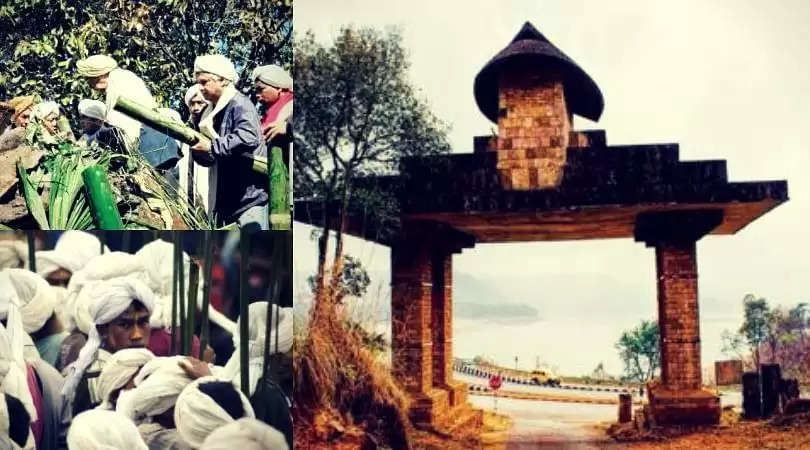DID YOU KNOW At 1424m, this is Meghalaya’s ‘Navel of Heaven’!

At 1424m, Sohpetbneng isn't the coldest peak in Meghalaya. But, most agree, it is the coolest. And it is not only because the peak commands an otherworldly view.
To the average Khasi, one of Meghalaya's three major matrilineal communities, Sohpetbneng isn't just any peak. It is the navel of heaven, where once grew a botanical bridge – umbilical cord, rather – for mortals to communicate between earth and God's abode in the sky. That, as the story goes, was before the bridge snapped following a sin-induced catastrophe.

Followers of the indigenous Khasi faith paying obeisance at Lum Sohpetbneng (Picture Courtesy: Just Shillong Facebook Page)
Sohpetbneng is 20km north of Meghalaya capital Shillong. Every year, on the second Sunday of February, hundreds of Khasi believers trudge 7km uphill from the highway to be spiritually cleansed. Through traditional rites and rituals, devotional songs and dances, they pray around a heap of stones to appease U Blei (Creator) for the wellbeing of the earth and life on it.

Across the lake is U Diengiei, a crater-like depression and perhaps the scarier reminder of the mythological disaster that befell the earthlings who got separated from their brethren in heaven. Here, God planted the tree of gloom that kept growing until it shrouded earth in darkness. It was only after man repented that God revealed the secret of cutting the tree to size through a bird.

Many in Meghalaya believe that if God helped the ancient Khasis and their cousin communities get over a mythical catastrophe in the past, He or She would come to their aid when another disaster happens. Most, however, are not sure if D-Day comes as soon as 21 December when according to the Mayan calendar the world will come to an end.
"Our civilisation might not be as old as that of the Aztecs, but there could be a pattern to doomsday predictions. Whether or not our ancestors lived through a cataclysm of mammoth proportions is a matter of belief, but the doomsday story could have been a way of telling people to follow the Khasi commandment of Ka Hok (righteousness) or face God's wrath. The Mayan prophecy might have been based on a similar theory," said Sumar Sing Sawian, one of the organisers of the annual Lum Sohpetbneng pilgrimage.
Where the Khasi legend scores over the Mayan prediction is in its message that there's hope after a catastrophe, Sawian said. "It would be nice to organise a symbolic trek up Sohpetbneng to pray for a better earth. Or maybe a prayer trip to U Diengiei, where a tree grew, albeit in the realm of mythology, to bring an end to the world," he says.
Organisations such as Meghalaya Tourism Development Forum (MTDF), a NGO, are toying with the idea of adding a touch of adventure to 'making peace' with nature. For the time being is a plan to greet December 21 with a trek up to Sohpetbneng peak for making earth a godlier place to live in, if not to seek the reappearance of the golden biological bridge that linked earth and heaven.
The article was first written by Rahul Karmakar and appeared first in Hindustan Times and TNT- The Northeast Today has not edited any part of it
Image Source: Just Shillong Facebook Page

















